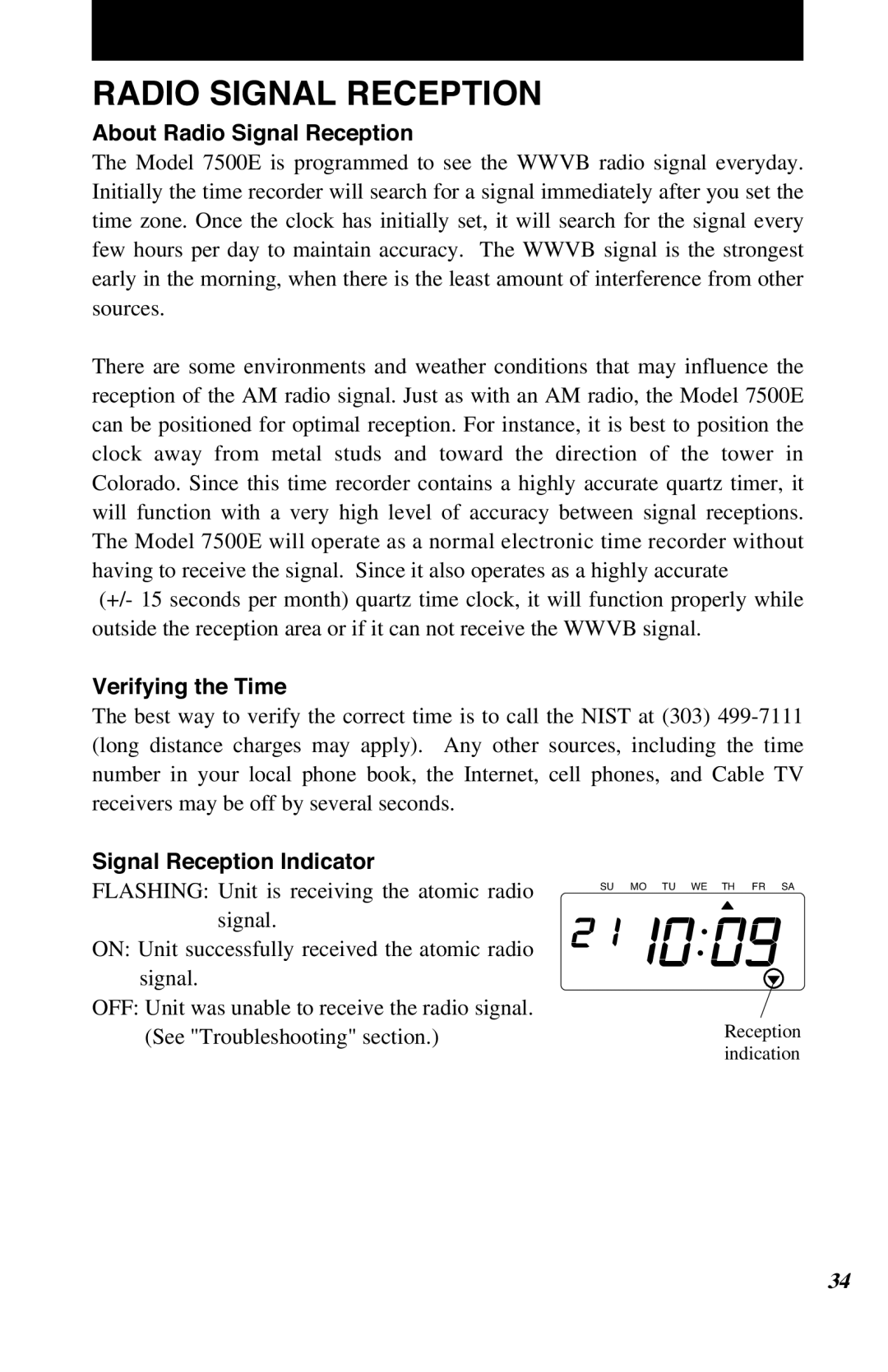
RADIO SIGNAL RECEPTION
About Radio Signal Reception
The Model 7500E is programmed to see the WWVB radio signal everyday. Initially the time recorder will search for a signal immediately after you set the time zone. Once the clock has initially set, it will search for the signal every few hours per day to maintain accuracy. The WWVB signal is the strongest early in the morning, when there is the least amount of interference from other sources.
There are some environments and weather conditions that may influence the reception of the AM radio signal. Just as with an AM radio, the Model 7500E can be positioned for optimal reception. For instance, it is best to position the clock away from metal studs and toward the direction of the tower in Colorado. Since this time recorder contains a highly accurate quartz timer, it will function with a very high level of accuracy between signal receptions. The Model 7500E will operate as a normal electronic time recorder without having to receive the signal. Since it also operates as a highly accurate
(+/- 15 seconds per month) quartz time clock, it will function properly while outside the reception area or if it can not receive the WWVB signal.
Verifying the Time
The best way to verify the correct time is to call the NIST at (303)
Signal Reception Indicator
FLASHING: Unit is receiving the atomic radio signal.
ON: Unit successfully received the atomic radio signal.
OFF: Unit was unable to receive the radio signal. (See "Troubleshooting" section.)
SU MO TU WE TH FR SA
Reception indication
33 | 34 |
